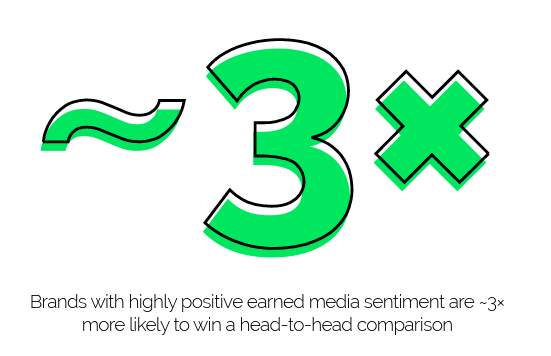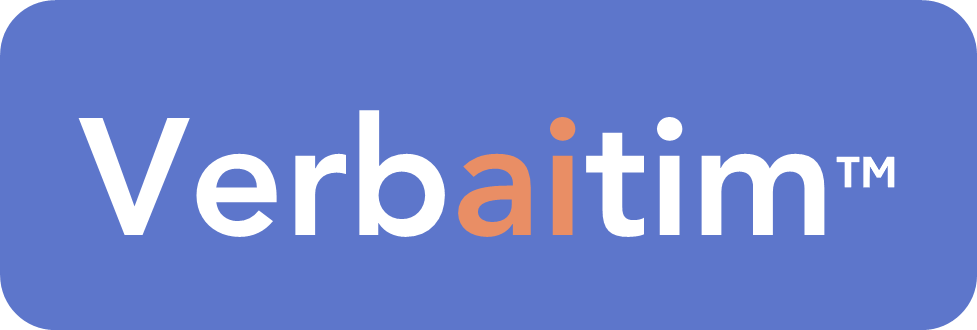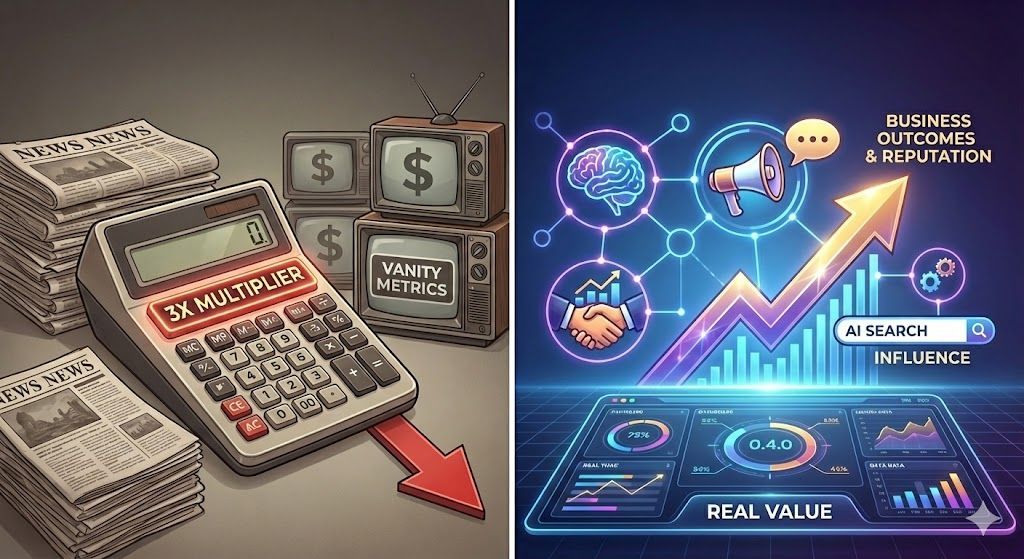Wag The Dog: strategic communications insights

Earned attention has always been the backbone of reputation. Whilst traditional media engagement is a conduit for reaching important human stakeholders, with the unstoppable rise of Generative AI there is a new audience that must be factored into the earned equation. Training and influencing the machines will be an endurance race that is already well underway. As communications leaders consider how to encourage their teams to rise to the challenge, the question that comes up most often is: if we pivot now, how soon will our efforts be rewarded? The honest answer is that it depends. Days, weeks or months, based on a selection of cases shared below. But here is what every communications lead needs to hear upfront: if you are waiting for certainty before you start, you are already falling behind. Successfully showing up in GenAI search requires a significant "shift and lift" of your current communications strategy, and the sooner the better. This means optimising your earned and owned assets (often referred to as Generative Engine Optimisation, or GEO) and conducting regular benchmarking to continually measure and fine-tune your efforts. GEO can be thought of as the evolution of SEO for environments where large language models increasingly mediate discovery. The algorithms and sources driving Generative AI search remain enigmatic and constantly evolving, forming a new track around which we must run. It is still early days, but the race has begun. The fast wins: days to weeks Noah Greenberg, CEO at Stacker, has talked extensively about how PR and content teams can positively impact chatbot results overnight. In one example, he shows how a study commissioned by tech recruitment firm Checkr on the best U.S. job markets was quickly picked up by Tier 1 outlets including Newsweek and CBS,¹ and within about a month, Checkr was being mentioned consistently in relevant AI conversations.

I've been banging the drum about the Great Communications Reset for a while now, and if you've been following along, you'll know my core argument: we're living through a once-in-a-generation opportunity for communications professionals to reclaim strategic territory that matters. But here's what I haven't stressed enough – and what new research has now quantified in stark terms: It's not just about getting earned media coverage anymore. It's about the quality and sentiment of that coverage. Fresh research from Hard Numbers and Onclusive titled "Recommendations in the Age of AI" has put hard numbers to something many of us suspected but couldn't prove: brands with high-quality, positively framed earned media don't just show up more often in large language model outputs – they win decisively when it matters most. And by "win", I mean actual commercial outcomes. The study examined over 100 global brands to understand how earned media influences category recommendations within ChatGPT, Gemini, Perplexity and other LLM platforms. The findings are unambiguous: Brands in the top 10% for media influence get recommended by LLMs around 80% of the time, compared to under 50% for brands in the bottom 10%. That's a 30-point gap in visibility. In commercial terms, that's the difference between being discovered and being invisible. But here's where it gets really interesting – and where most communications teams are still missing the point. Brands in the top 10% for positive media sentiment are nearly twice as likely to receive low concern scores from AI platforms. Think about that for a moment. When someone asks ChatGPT "What are the concerns about [your brand]?", the machine's response is directly influenced by the tone and sentiment of your earned media footprint. And in head-to-head "Which brand is better?" prompts, high-sentiment brands are around three times more likely to win against competitors. Three times. The pattern is unmistakable. It's not enough to be in the story anymore. The actual tone of that story – whether it's positive, neutral, or negative – is now a performance metric inside the machine. Why Sentiment Matters More Than Volume For years, communications teams have been measured on reach, impressions, and coverage volume. The logic was simple: more coverage equals more visibility equals better outcomes. But generative AI platforms don't work that way. LLMs aren't counting your clips. They're synthesising narratives. They're looking for patterns across trusted sources to form coherent, credible responses. And in that synthesis process, the quality and tone of individual pieces of coverage matter far more than the sheer volume. A single deeply positive feature in a trusted publication – one that positions your brand as innovative, trustworthy, and delivering genuine value – can influence AI outputs more effectively than a dozen generic mentions. This is why the Hard Numbers and Onclusive research is so significant. It's not telling us to chase more coverage. It's telling us to chase better coverage. Coverage that: Comes from authoritative, trusted sources that LLMs prioritise Contains clear, structured information that machines can parse Positions your brand with positive sentiment and credible third-party validation Addresses the specific attributes that matter in your category (trust, innovation, value, quality) The Agentic Commerce Reality Check Here's why this matters right now, not in some distant future. With OpenAI and others rapidly advancing agentic capabilities, LLMs are evolving from passive information retrieval tools into active brand recommenders and decision-makers. We're entering an era where AI doesn't just inform purchasing decisions – it makes them. ChatGPT can already browse the web, compare products, and make recommendations. The next iteration will be able to complete transactions autonomously on behalf of users. When someone says "ChatGPT, find me the best project management software for a team of 15 and set up a trial," the machine won't serve up 10 blue links. It will make a decision. And that decision will be heavily influenced by your earned media footprint – specifically, the sentiment and quality of that footprint. What This Means for In-House Teams If you're leading communications for a brand right now, here's what you need to be doing: 1. Audit your current earned media sentiment Don't just count clips. Analyse the tone and positioning of your coverage across key publications. Are you consistently positioned positively? Are the attributes being emphasised the ones that matter for your category? This isn't vanity work. This is understanding what the machines are learning about you. 2. Prioritise quality over quantity in media relations One deeply positive feature in a tier-one publication or respected trade outlet is worth more than a dozen generic mentions. Invest your time in cultivating relationships with journalists who can deliver substantive, authoritative coverage. Focus your pitching on stories that genuinely demonstrate value, innovation, and trustworthiness – the attributes that LLMs prioritise when forming recommendations. 3. Structure your owned content for machine readability Your newsroom, blog, and website content are also training the machines. Make sure they're doing the job properly. Use clear, structured formats (FAQs, how-tos, product comparisons). Implement schema markup. Update content regularly. Ensure your "About Us" and core product pages use consistent language that mirrors how you want to be discovered. 4. Monitor your AI footprint regularly You should be querying ChatGPT, Gemini, and Perplexity regularly with category-relevant prompts to understand: How often you're being recommended What's being said about you Which sources are being cited How you stack up against competitors This isn't optional anymore. This is reputation management in 2025. 5. Measure what matters Move beyond AVE and reach. Start tracking: Share of positive sentiment vs competitors Citation frequency in AI outputs Win rate in head-to-head AI comparisons Sources that most influence your AI reputation These are the metrics that actually correlate with commercial outcomes in the AI-driven discovery era. The Bottom Line Regular, high-quality earned media has become a key driver of whether a brand is surfaced, recommended, and ultimately purchased through generative AI platforms. The brands that understand this – that invest in building authoritative, sentiment-rich earned narratives – will dominate tomorrow's reputation landscape. The ones treating communications as a tick-box exercise, chasing volume over quality, will become increasingly invisible where it matters most. This is the Great Communications Reset in action. The opportunity is significant, but it requires a fundamental shift in how we think about earned media success. It's not about the clip anymore. It's about what that clip teaches the machine. And the machines are learning fast. You can access the full "Recommendations in the Age of AI" research report from Hard Numbers and Onclusive [here - link ].

There's a healthy skepticism about Generative Engine Optimisation (GEO), and understandably so. An infinite number of prompt possibilities, training data that's a black box, less direct evaluation metrics than we're used to in an emerging field... But as Stephen Waddington points out, we've been here before - first with search, then with social media. When the writing's on the wall, the answer isn't to bury our heads in the sand. It's to do the work. To experiment, measure what we can, be honest about what we don't know, and relentlessly test and learn. In the last six months, we’ve seen businesses across the board waking up to the transformative impact GEO will not only have in the future, but is having on brand discovery today. If you're fighting to make the business case within your organisation, we’ve put together this guide to help. ...in the words of Harry Truman, imperfect action is better than inaction 1. The market reality If GEO is the elephant in the room, it's now impossible to ignore. AI is a general-purpose technology. Exploring GEO isn't a frivolous experiment but a necessary response to market reality. The (ahem) hard numbers tell the story: 1.49 billion downloads of AI applications in 2024 alone 92% of Fortune 500 companies are already using ChatGPT ChatGPT daily active users have increased 4x in the last year ChatGPT hit 365 billion annual searches in just 2 years (that’s 5.5x faster than Google) 89% of buyers are using generative AI in at least one area of their purchasing process When over 540 million people are actively using ChatGPT each month, we're not talking about early adopters anymore. Gen AI is the single biggest shift in user behaviour since the smartphone. 2. Winning minds, not clicks The notion of "zero click" has caused panic in the digital marketing community. But with consumption and discovery happening in the same place, there's an opportunity to win something more valuable than site traffic. We're not in the camp proclaiming “SEO is dead” for a multitude of reasons. But if SEO helps brands win clicks, GEO is what helps them win minds. The killer stat? A visitor referred via an LLM is worth 4.4x the value of a visitor from traditional organic search. According to SEMRush, "AI search visitors tend to convert better because LLMs can equip users with all the information they need to make a decision." This makes perfect sense. By the time an AI search user reaches your website, they've likely already compared options and made some form of selection. So, they’re much more likely to convert. 3. What gets measured gets managed What gets measured gets managed... and what gets managed gets budget. One of the biggest challenges to GEO investment currently is a lack of viable evaluation metrics. But in the words of Harry Truman, imperfect action is better than inaction. Start by quantifying current AI-referral traffic to your site and how it has grown historically versus other channels. You can also gather feedback directly, or through sales, on customer journeys. Case in point: a Hard Numbers client recently closed a deal with a prospect who'd used ChatGPT to research and shortlist potential vendors. 4. The first mover advantage They say the early bird gets the worm, but the second mouse gets the cheese... Well, what if the cheese keeps moving? With the rapid development of what I like to call "AI-enabled everything," being first - even failing first - can deliver a competitive edge. Look no further than OpenAI's dominance if you need convincing. At Hard Numbers, we've spoken to businesses at every different stage of the GEO spectrum over the last 12 months. Even once-wary brands are now waking up to the GEO opportunity. But many aren't fully grappling with this new area, creating a meaningful first-mover advantage for those who act now. 5. A high trust channel A direct benefit of GEO is building brand awareness in a channel with serious user trust. The indirect benefit is you’re driving broader awareness by increasing your number of brand citations across the web. You can track these citations through Share of Search and branded search volume. In lieu of standardised metrics, use what you already have; existing measurement frameworks can make useful proxies. 6. Expanding comms' influence PR missed the boat on SEO and social media. Letting others steal a march on GEO isn't restraint, it's surrender. The field currently has no owner or line item in the budget. This means an opportunity for comms teams to expand their influence, while ensuring the right checks and balances are in place in an emerging field. 7. GEO as a force multiplier GEO doesn't exist in a vacuum. It's a critical evolution of earned and owned content strategy, which means there's no function better placed than comms to ensure an integrated approach. Our research shows large language models (LLMs) source their information from editorial media, owned content, and other high-authority online content. This makes Gen AI an important force multiplier for existing content efforts. 8. Upskill to stay ahead The biggest barrier to GEO investment isn't budget, it's a knowledge gap. When you can't confidently explain how LLMs work on a basic level, you're fighting an uphill battle in the boardroom. But GEO is still so nascent that even a foundational understanding puts you ahead of 90% of your peers. That's why we made our GEO primer , to give comms professionals the knowledge they need to speak with authority about what we know, while being honest about what we don't. The bottom line: Is GEO messy and uncertain? Absolutely. Do we have all the answers? Definitely not. In fact, you should treat anyone claiming to be “GEO expert” with *extreme* caution. But the boat is leaving the dock, and waiting for clearer waters is how you get left behind. Want to learn more about the GEO opportunity? Download our latest research with Onclusive or to book a free 'Intro to GEO' training session for your team, email claire@hardnumbers.co.uk *** Sources and further reading: 1 https://backlinko.com/most-popular-ai-apps 2 https://www.digitalsilk.com/digital-trends/number-of-chatgpt-users/ 3 https://www.cnbc.com/2025/08/04/openai-chatgpt-700-million-users.html 4 https://www.fortuneindia.com/technology/chatgpt-hits-365-billion-annual-searches-55x-faster-than-google/123663 5 https://www.forrester.com/report/b2b-buyer-adoption-of-generative-ai/RES181769

I'll be first to admit that I've been banging on about brand reputation and GenAI for a while now – how Generative Engine Optimisation (GEO) and earned media can shape reputation in the age of chatbots, particularly for B2B organisations. But ChatGPT launching its own web browser Atlas this week got me thinking: what about the consumer play? My timing couldn't be better. Adobe recently dropped their 2025 US Holiday Shopping Forecast , and the numbers - whilst U.S.-centric - are illuminating. Adobe surveyed 5,000 American consumers and found that not only are online sales expected to crack $250 billion for the first time, but GenAI-powered referrals to retail sites are projected to surge over 500% year-over-year during the holiday season, peaking around Thanksgiving. And there's more chunky numbers to dwell on. Back in August, traffic from GenAI sources to retail sites was already up 1,500% YoY. What's more, three-quarters of consumers say they're already familiar with AI assistants, over a third are actively using them, and 95% report satisfaction with their AI-influenced purchases. Let that sink in for a moment. The commercial stakes are real. If you're not showing up in GenAI, you're essentially invisible to a rapidly growing segment of consumers who are using ChatGPT, Perplexity, and Claude the same way they used to use Google. Except these tools don't just serve up links – they make recommendations, build trust, and increasingly, drive purchasing decisions. This shifts the brand-building game entirely. Traditional SEO focused on keywords and backlinks. But Large Language Models (LLMs) prefer information structured differently – think detailed product FAQs, step-by-step guides, and clear, bulleted formats that can answer the thousands of specific questions people fire at AI chatbots. Sure, we'll likely see more commercial partnerships between brands and big tech (hello, OpenAI and Walmart), but right now, arguably the most effective way to build brand awareness and trust in GenAI environments is through communications – both owned and earned. Why? Hard Numbers' landmark Reputation in the Age of AI research, while focused on corporate reputation queries, reveals a principle that's fundamental to how LLMs operate: they overwhelmingly rely on earned and owned media to form their 'opinions' about brands. In their study of the world's 100 largest brands, 61% of brand-related content came from earned sources, rising to 65% for trust assessments and 72% for value perceptions. There's every reason to believe this pattern extends to B2C purchase recommendations. After all, when consumers ask "What's the best running shoe?" or "Which TV should I buy?", LLMs are drawing from the same credible sources: product reviews, expert comparisons, media features, and third-party recommendations. All earned media. So, what's a communicator to do? I've been following Sarah Evans ' work closely – she's one of the sharpest minds on this topic and writes regularly in her PR@ctical newsletter . Some of her practical GenAI gold dust includes: Build a "prompt universe": Map out the purchase-intent queries showing up in LLMs for your category, then reverse-engineer earned storylines that answer these questions. Think like your customer, not your brand team. Optimise for citability, not just coverage: A targeted earned media program that delivers third-party validation and credible citations beats spray-and-pray pitching every time. Quality trumps quantity when it comes to training the machines. Write like an analyst: AI platforms view analysts as credible expert voices. Pair every claim with solid citations, publish content (FAQs, how-tos, guides) in machine-readable formats, and refresh it regularly. Make it easy for LLMs to trust and cite you. Measure your GenAI visibility: If your brand shows up in less than 40% of relevant AI responses, you're essentially invisible where buying decisions now start. You can't improve what you don't measure – and in this new landscape, measurement isn't optional. For traditional PR folks (like me), the question is no longer "Did we get coverage?" It's "Are we being remembered – and trusted – by AI?" Because as Adobe's Christmas spending projections make crystal clear, that trust increasingly translates to measurable commercial impact. The brands that master this shift will own the attention economy. The ones that don't might as well be invisible. So, here's to a GEO little Christmas – may your brand be cited, trusted, and top of mind when consumers ask AI where to spend their money.

Melbourne, Australia – 16 October 2025, Communications advisory firm indigo murphy has launched Verbaitim™, a service developed for communications teams seeking to strengthen brand visibility in AI-powered search environments. Coinciding with this launch, indigo murphy has formalised a partnership with Hard Numbers, a UK-based performance-driven marketing consultancy, to deliver expertise in Generative Engine Optimisation (GEO) across Australia, Asia Pacific and further afield. As both business and consumer audiences increasingly turn to sources such as ChatGPT, Google Gemini, Microsoft Copilot and Perplexity for information, GEO has become the essential process for being cited, recalled, and trusted within AI-driven platforms. Large Language Models (LLMs) are now critical influencers on reputation, retrieving and repeating information they recognise as credible, while heightening the responsibility for communications leaders to ensure accurate brand representation in AI-generated outputs. Understanding that AI is supercharging editorial media's influence on corporate reputation, driving 61% of content about a brand [1] , Verbaitim™ has been designed to support in-house communications functions in expanding their earned storytelling to drive trust and authenticity within GenAI environments. The programme delivers practical, scalable guidance across three core service lines: workshops that educate communications teams on earned attention in the GenAI era; comprehensive brand and narrative audits, benchmarking presence within AI-generated content alongside recommended pathways forward; and continued advisory support empowering teams to adapt and demonstrate their value as the reputation landscape shifts. “We are living through a Great Communications Reset,” commented Simon Murphy, Founder of indigo murphy. “Reputation is increasingly dictated not by traditional channels, but by how brands appear within AI platforms. Communications professionals therefore have a generational leadership opportunity to tackle this with earned storytelling, and Verbaitim™ equips them for the challenge.” Murphy added: “Our partnership with Hard Numbers delivers scale, breadth and commercial rigour that strengthens the business value of communications for growth and resilience.” Darryl Sparey, Managing Director and Co-Founder of Hard Numbers, said: “With our Reputation in the Age of AI research , which we released in November of last year, we were one of the first PR agencies globally to establish how earned media impacted how brands are portrayed by LLMs. By applying this research to our practice, we’ve developed considerable expertise in helping our clients to monitor and shape how they appear within content produced by AI systems about their brands, products, services or category. We are delighted to collaborate with indigo murphy to support progressive teams in Australia and Asia Pacific, bringing our commercial focus to a changing PR landscape.” The agreement with Hard Numbers enhances the Verbaitim™ offer, providing increased scale, commercial discipline and access to leading multisector performance marketing approaches that will help communications teams maximise their earned media footprint. “As conventional web traffic declines, AI-driven search results achieve significantly higher conversion rates [2] , making authority the new competitive advantage,” added Murphy. “In this environment, where narrative is determined by algorithms, Verbaitim™ helps clients take ownership of reputation-focused activity, with earned action being the key to unlocking future opportunities.” To learn more about Verbaitim™ please visit www.indigomurphy.com/verbaitim or email simon@indigomurphy.com . About indigo murphy indigo murphy provides advisory solutions to help organisations manage reputation challenges amid geopolitical uncertainty, technology disruption and shifting influence in the communications landscape. About Hard Numbers Hard Numbers is a performance-driven, data-informed marketing and communications consultancy, with a focus on delivering tangible, demonstrable return on investment for our clients. We create campaigns that drive pipeline, sales and company growth for fast-moving business-to-business companies. We speak in plain English. We hate jargon. We work very hard. We utilise technology to make us more efficient. We use continuous professional development to make us better at our practice. And we measure and deliver meaningful results. Not just reach. In uncertain times, you need Hard Numbers . [1] Reputation in the Age of AI: how Large Language Models (LLMs) influence perceptions of Quality, Trust, Innovation, and Value in brand communications – Hard Numbers (November 2024) [2] AI Search SEO Traffic Study – Semrush (July 2025)

